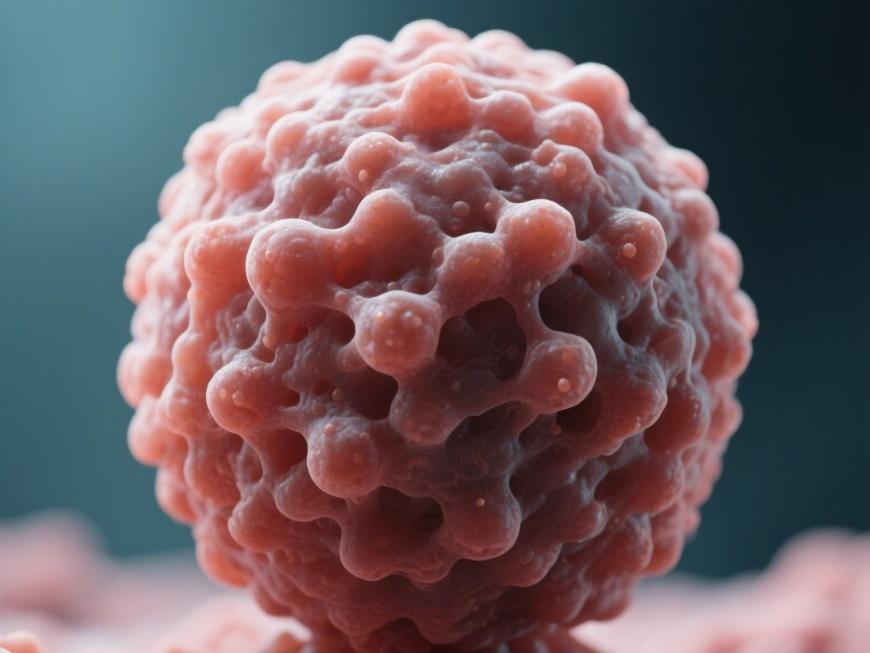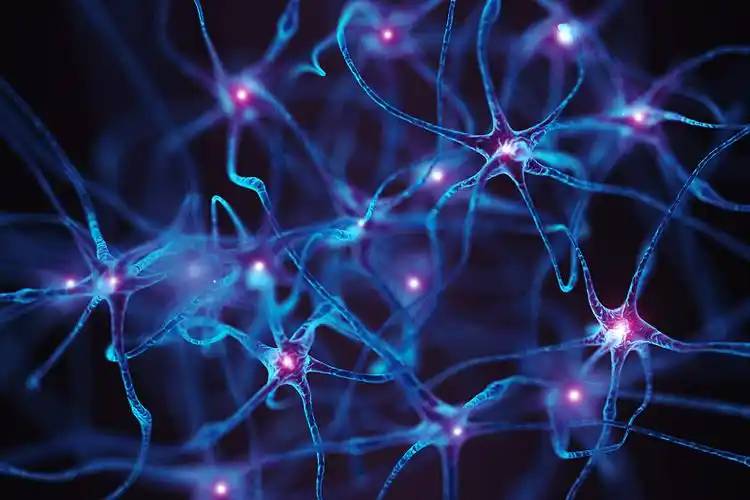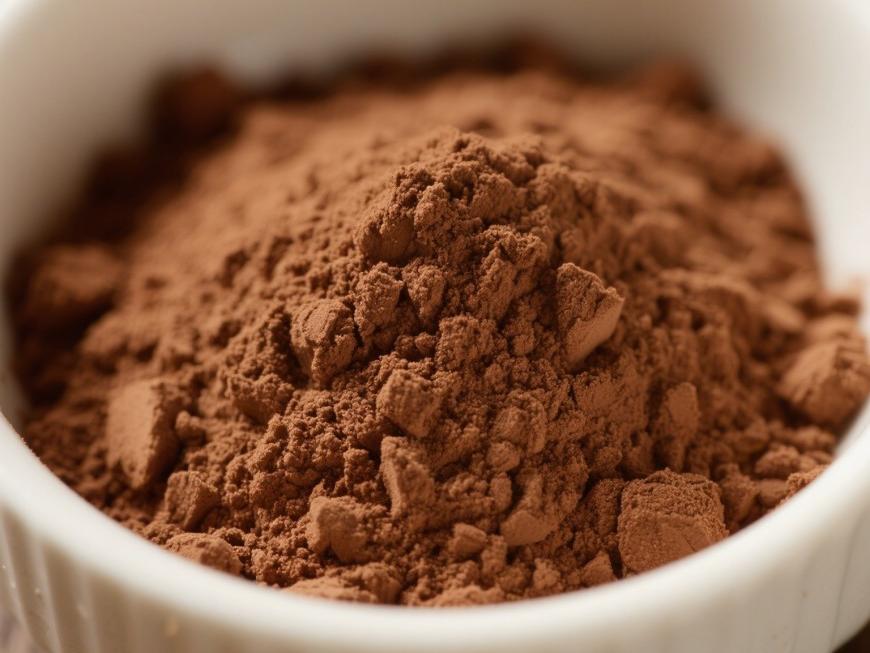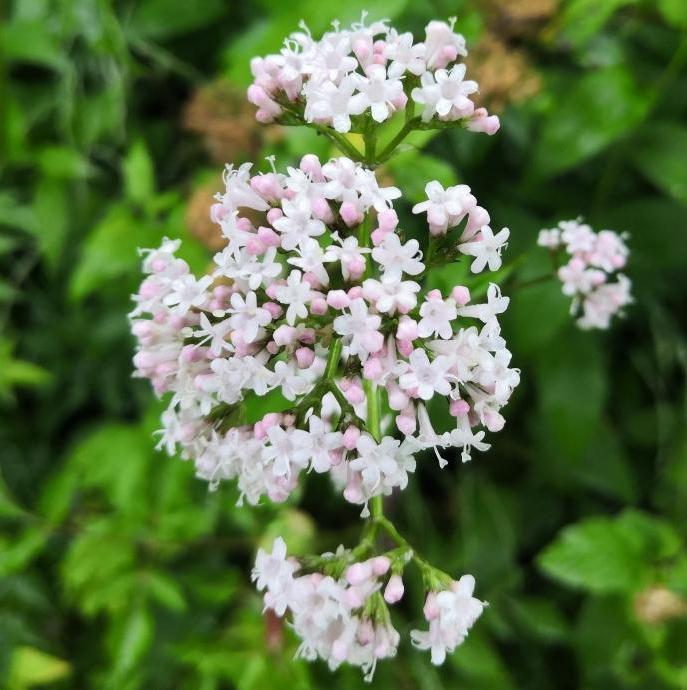ヴァレリアンとうつ病の研究
学名:valeriana officinalis l .)。is a perennial herbaceous plant belonging to the Valerianaceae family and Valeriana genus. Valerian is primarily distributed in regions with mild temperatures and high humidity. It is associated with the heart and liver meridians, calms the mind, and has therapeutic effects for insomnia, depression, and anxiety [1].
1抗がん作用
Modern pharmacological studies suggest that Valeriana may possess anticancer activity. Xue Cunkuan et al. [2] employed an in vivo mouse tumor transplantation experiment and an in vitro MTT assay using thiazole blue staining to investigate the antitumor activity of total cycloentran, cycloentran glycosides, and cycloentran esters in Valeriana. The results showed that the cycloartenol terpenoids in Valeriana officinalis exhibited significant cytotoxic effects against monocyte leukemia (U937) and cervical cancer (Hale), with a half-maximal inhibitory concentration (IC50) of 20–30 mg/L. In vivo experiments in mice demonstrated a marked antitumor effect, with an IC₅₀ of 46.38% to 68.71%. Zhang Shuqin et al. [3] reported that valerianolide can significantly prolong the survival time of Ehrlich ascites carcinoma (EAC) mice, with a prolongation rate ranging from 62% to 66%, comparable to 5-FU, and it can increase the formation of red blood cell clusters, indicating that it may have immune-enhancing effects.
葉建民ら[4]はそれを発見した使う鹿子草製造エキスmkn-45胃がん細胞にアポトーシスを誘導することができる。これはカスパーゼ活性化と関連しており、外因性アポトーシス経路とは無関係の内因性アポトーシス経路の活性化によって達成され、濃度依存的および時間依存的な効果を示す。その作用機序は、p53タンパク質の発現の上昇に関連しており、baxのプロアポトーシス作用を増強し、サバイビンとbcl-2の発現を阻害する。しかし、p53タンパク質の高発現とサバイビンの低発現の具体的なメカニズムについては、さらなる研究が必要である。

Chen et al. [5] used the MTT assay, quantitative polymerase chain reaction (qPCR), and Western blot (WB) to investigate the effects of Valeriana officinalis on pancreatic cancer (PC) cells, and conducted a preliminary discussion on the underlying mechanisms. The results indicated that Valeriana officinalis significantly inhibited the growth of PC cells but did not affect the growth of normal pancreatic epithelial cells. The mechanism of action was associated with increasing Bax expression levels, inhibiting Bcl-2, c-Myc, and cell cycle protein B1, and suppressing Stat3 transcriptional activity. Valeriana officinalis induced apoptosis and cell cycle arrest, thereby exerting anticancer effects.
Lu et al. [6] used a xenograft mouse model to confirm that valerian acid inhibits the growth of glioblastoma multiforme (GBM) by enhancing intrinsic signaling, increasing ROS levels, and activating the AMPK pathway, thereby inducing GBM cell apoptosis. In summary, Valeriana officinalis exerts its antitumor effects by regulating factors or pathways such as P53, Bax, survivin, Bcl-2, c-Myc, B1, Stat3, ROS, and AMPK, which holds significant implications for the development of anticancer drugs in the future.
2. 睡眠の質の向上
Zhang Zhongli et al. [7] administered 抽出カノコソウ属 to D-galactose-induced and sleep-deprived Alzheimer's病(sdad)ラット グアニジンと模範グループに比べアルコールカノコソウ属エキス分脱脂加工グループ、エタノール抽出洗っ20%グループ上昇したのに対し、同エタノール洗っ70%さ層の大気汚染の程度catalase(猫)抗酸化力総額(T-AOC)の鼠は、血清減少分解(痛み)活動、活動の評価を一層高める超酸化物イオンdismutase (SOD)グルタチオンのperoxidase (GSH-Px) GSH-Px活動が増え、脂質peroxidation malondialdehyde (MDA)級低下(P <0.05、P <0.01)。その結果、valeriana抽出物がsdadモデルラットの学習と記憶能力、睡眠の質、および抗酸化能力を改善することが示された。この機構は、sdadラットにおけるt-aoc活性の増強、ach eレベルの低下、および抗酸化能力の改善に関連している可能性がある。ab-dellah[8]らは、花の形をした草とバレerianを併用すると、不眠症成人の睡眠時間が有意に増加し、睡眠効率が78.4%±12.5%から84.6%±10.2% (p = 0.002)に増加し、覚醒回数と睡眠時間の合計は減少したが、睡眠遅延は改善しなかったと報告した。これは、クッピダタム(polygonum cuspidatum)とバレリアナ(valeriana)の抽出物が、不眠症の成人の睡眠に有益な効果を持つ可能性を示唆している。
Sichardt et al. [9] compared the effects of methanol (M-E), ethanol (E-E), and ethyl acetate (EA-E) extracts on postsynaptic potentials (PSP) of cortical neurons at concentrations ranging from 0.1 to 15 mg/mL. M-E induced strong inhibition, while E-E (1–10 mg/mL) had no significant effect on PSP. The adenosine A1 receptor antagonist 1,3-dipropyl-8-cyclopentylxanthine (DPCPX, 0.1 μmol/L) completely antagonized the maximum inhibitory effect induced by M-E. In contrast to M-E, EA-E (10 mg/mL) increased PSP, GABA_A receptor antagonist picrotoxin (100 μmol/L) completely blocked PSP. Therefore, it was found that the mechanism of action is related to adenosine A1 receptors and GABA_A receptors, and the activation of these two receptors is mediated by different components in Valeriana extract睡眠誘発効果を発揮します
Tokunaga et al. [10] investigated the effects of valerian extract preparations (BIM) on the sleep-wake cycle in a rat sleep disorder model, comparing them with the valerian extract group. Both significantly shortened the sleep latency period but had no significant effect on the total duration of wakefulness, non-rapid eye movement (non-REM) sleep, and REM sleep. However, the specific mechanism of BIM'の抗不眠症効果は不明のままであり、さらなる調査が必要である。sudatiら[11]は、脳の均質化において、バレリアはオキシダントによって誘導されるチオバルビツール酸活性物質に対して濃度依存的な阻害作用を示し、大脳皮質の脂質過酸化(lpo)を有意に阻害し、デオキシリボースの分解を減少させることを実証した。また、皮質スライス中のキノリン酸によって誘導される活性酸素種の産生を有意に減少させたことから、バレリアン抽出物が異なる酸化促進剤によって誘導されるlpoに一定の調節効果を有し、酸化ストレスに伴う不眠症を軽減する抗酸化物質として機能している可能性が示された。

Zhang Jinpeng et al. [12] used reverse transcription PCR (RT-PCR) to detect changes in the levels of interleukin-1β (IL-1β) and tumor necrosis factor-α (TNF-α) in peripheral blood mononuclear cells induced by Valeriana. The results showed that Valeriana administration significantly increased the expression of IL-1β and TNF-α, with significant differences compared to the blank control group (P < 0.05), thereby improving sleep quality. The mechanism of action may be related to the increased levels of IL-1β and TNF-α in mice [13]. Valerian/cascade mixture significantly increased NREM and total sleep time in the pentobarbital-induced sleep model, reduced sleep latency and wakefulness time, and its sleep-promoting mechanism is due to upregulation of GABAAR [14].
したがって、バレリアンはgabaa受容体とアデノシンa1受容体を活性化し、抗酸化能力を高め、脳内の神経伝達物質に影響を与えることによって不眠症を改善する。
3抗うつと抗不安作用
benkeらは[15]の抗不安作用を報告したvalerian extract valerianic acid targets the β3 subunit of GABAA receptors. Experimental results showed that point mutations in the β2 or β3 subunits (N265M) of GABAA receptors significantly reduced drug response. In in vivo experiments, valerian acid and valerianol exhibited high-efficiency anxiolytic activity in the elevated plus maze test and light/dark choice test in wild-type mice. However, in β3 (N265M) point mutation mice, the anxiolytic activity of valerenic acid was absent. Therefore, the GABAA receptor containing the β3 subunit was identified as the target of valerenic acid' s anxiolytic効果。
Neamati et al. [16] found that valerenol extracts could prevent depressive behavior in ovalbumin-sensitized rats, and oxidative stress plays a role in depression and anxiety [17], and oxidative stress was also increased in ovalbumin-sensitized animals [18]. Therefore, this study suggests that the antidepressant effects of valeren extracts may be related to oxidative stress responses, but the specific mechanisms require further investigation. Mojica et al. [19] used a light/dark preference test in zebrafish to demonstrate that valerian and valerenic acid exhibit anxiolytic activity in zebrafish, The anxiolytic effects disappeared after administration of LAP3 (mGluR I antagonist) and EGLU (mGluR II antagonist), suggesting that the mechanism may be related to metabotropic glutamate receptors (mGluR). Murphy et al. [20] employed the elevated plus maze test and behavioral tests, and found that valerenic acid is the primary anxiolytic component, and its anxiolytic effect is enhanced due to the presence of GABAB receptors.
Gonulalan et al. [21] reported that valerian extract (VO), valerenic acid (VA), acetoxy valerenic acid (AVA), valerenic acid-free (VAF), and acetoxy valerenic acid-free (AVAF) on the expression of brain-derived neurotrophic factor (BDNF) in SH-SY5Y cells, GABAA receptors are regulated by BDNF and modulate depressive behavior. The results showed that VO and VA extracts significantly increased BDNF expression in SH-SY5Y cells (P < 0.001). When cells were treated with VAF extract, this effect was completely abolished. AVA alone did not cause any significant changes in BDNF levels. The effect of the extracts on cells was concentration-dependent with increasing VA content. Therefore, Valerian extract can increase BDNF levels in SH-SY5Y cells.
Valerian extract can improve stress responses in mice induced by physical shock and psychological stress, reduce plasma corticosterone, serotonin (5-HT), and norepinephrine (NE) levels in the hippocampus and amygdala of mice, thereby alleviating the negative effects of stress on mice [22]. Farah et al. [23] conducted a randomized, crossover experiment, selected 20 anxious patients with bilateral extraction of the third molars in the mandible, assessed their physiological parameters, and found that valerian provided a comforting and relaxing effect, demonstrating anxiolytic effects, with fewer adverse reactions compared to midazolam. However, further clinical studies are needed for clinical application. The above studies indicate that valerian can improve depression and anxiety through mechanisms such as regulating GABA receptors and reducing oxidative stress.
4 Neuroprotective効果
As lifespan increases, a better understanding of the physiological and pathological mechanisms associated with brain aging can help prevent neurological diseases, thereby improving the quality of life in the elderly. Brito et al. [24] conducted in vitro experiments on C6 glioma cells in rats using the MTT method and found that valerian had a protective effect against rotenone-induced cytotoxicity. In vivo experiments investigated the interaction between valerian and rotenone in cortical spreading depolarization (CSD), showing that valerian had a certain inhibitory effect on the proliferation rate of CSD. The specific mechanism remains a subject of debate and requires further investigation.
cornaraら[25]が調査した biological effects of valerian on the nervous system using acetylcholinesterase (AChE) inhibitory activity and microelectrode array (MEA) analysis. The AChE results indicated that the IC50 of valerian was 127.30 μg/mL, MEA analysis was conducted by recording the mean firing rate (MFR) and mean burst rate (MBR), with results of 16.5 and 22.5 μg/mL, suggesting its potential therapeutic effects on neurological disorders. Sudati et al. [26] investigated the protective effects of Valeriana against the harmful effects of rotenone on black-bellied fruit flies. The results indicated that Valerian extract significantly reduced the toxic effects of rotenone on black-bellied fruit flies. After Valerian treatment, the content of total thiols, as well as the mRNA expression of SOD and CAT, were reduced. This confirmed the potential of this model in exploring treatments for neurodegenerative diseases; however, the specific neural pathways involved require further investigation.
研究では、mptp誘発性パーキンソン病を確立しました'の病気のマウスモデル。筋力テストを通じて、平均台実験、フィールド活動能力試験の后とっととweight-bearing検査だけ先走っ検出扇動的なcytokines IL-1β、IL-6、TNF -αカバカバ、IFN -γ結果酸には、Parkinson& neuroinflammation調節#39;s疾患、中脳領域における炎症誘発性サイトカインとgfapのレベルを低下させます。抑制作用作用機構関連するかもしれないNF -κ活性化のBさん共重合体微孔薄膜【27】にと5-HT5Aの受容体。しかし、別の研究では、pdの治療におけるvaleriana officinalisの潜在的な機序を評価するためにゲノム法が用いられた。その結果、ヘスペリジンとリノール酸はsur1に結合することでatp消費時の酸化ストレスを軽減することが示されたバレレン酸とアピゲニンです脳幹の黒質(sn)ニューロンからgabaが放出され、過剰な皮質興奮が抑制されるのに重要な役割を果たしている可能性がある[28]。

Sharifzadeh et al. [29]induced morphine withdrawal syndrome in mice by injecting naloxone and found that animals treated with Valeriana officinalis water extracts and methanol extracts significantly reduced naloxone-induced jumping. The mechanism of action may involve interacting with inhibitory neurotransmitters in the nervous system to influence morphine withdrawal syndrome. A study involving healthy volunteers in a double-blind, randomized, crossover, placebo-controlled experiment found that a single oral dose of Valerian extract can influence human excitatory cortico-spinal pathways [30]. Fachi-netto et al. [31] administered Valerian to animals with oromotor dysfunction (OD) induced by long-term haloperidol administration, to assess empty chewing movements (VCMs), motor activity, maze performance, and oxidative stress parameters. The results indicated that valerian did not cause any oxidative damage to the central nervous system (CNS) and did not prevent VCMs.
Additionally, another study found that valerian had a preventive effect on VCMs induced by reserpine in rats, which significantly increased VCMs in rats. However, co-treatment with valerian reduced the intensity of VCMs. In the cerebral cortex, VCMs were significantly positively correlated with DCF-oxidized levels (P < 0.05), while Na+ K+ -ATPase was negatively correlated in the substantia nigra of the midbrain, indicating that valerian has a behavioral protective effect against reserpine-induced VCMs in rats. However, the exact mechanism remains to be further investigated [32]. Circosta et al. [33] reported that valerian alcohol extracts and water extracts protect guinea pig coronary artery spasm and blood pressure induced by pituitary vasopressin, with the mechanism possibly mediated by interfering with calcium overload capacity. In summary, Valerian has therapeutic potential for neurological disorders characterized by oxidative stress imbalance and astrocyte dysfunction, as well as degenerative neurological diseases.
5てんかん効果
てんかんは、現在、不治の病であり、その再発エピソードは、患者の苦しみといくつかの後遺症を引き起こす'ですそのため、副作用を最小限に抑えながら臨床的に有効な薬剤を見つけることが急務となっています。rezvaniら[34]はこれを報告している Valeriana officinalis water extracts exhibit significant anticonvulsant effects in a temporal lobe epilepsy animal model, whereas petroleum ether extracts show no significant anticonvulsant effects. Selective adenosine A1 receptor antagonists can reduce the anticonvulsant effects of Valerian water extract, suggesting that Valerian's抗けいれん作用は、アデノシン系の活性化を通じて媒介されることができる。
Bianca et al. [35] induced seizures in adult zebrafish using pentylenetetrazole (PTZ) and found that ethanol valerian extract significantly enhanced the anticonvulsant effects of clonazepam and phenytoin, increased the seizure latency period, and improved survival rates, with a concentration-dependent increase in seizure latency. However, the specific mechanism of action remains unclear and requires further investigation. Additionally, studies have shown that valerian extract can improve PTZ-induced epileptic seizure behavior in rats, increase plasma SOD antioxidant enzyme activity, and correct the QT interval (QTc), which may serve as a predictive factor for recurrent epileptic seizures and epilepsy onset [36]. Therefore, valerian holds significant potential as an adjunctive therapeutic agent for anticonvulsant therapy.
他の6
研究は、ヴァレリアンが将来のための新しい方向性になるかもしれないことを初めて報告しました2型糖尿病の治療。カバカバの影響を研究ブックエンドに3T3-L1 adipocytes、カバカバを発見し「脂肪を促進できるつくる」という記憶差別、大幅mRNAレベルperoxisome proliferator-activated受容体γ(燃やす働きγ)、αCCAAT-element-binding蛋白により蛋白質「脂肪をつくる」という記憶2、も大幅mRNAとタンパク質レベルのadiponectin起こしてるんだ。また、「脂肪判明つくる」という記憶に関連付けられた差別化やadiponectin増加のレベルを燃やすγ綴じ[37]綴じる。
Occhiuto et al. [38] reported that Valeriana extract inhibits uterine contractions in a concentration-dependent manner and reduces the maximum contraction response induced by acetylcholine, norepinephrine, and histamine without requiring stimulation. The mechanism of action may be mediated by interfering with calcium overload. Studies have indicated that valerian has the strongest toxicity against red flour beetles (LD₅₀ = 10.0 μg/adult) and exhibits additive effects, suggesting that valerian can serve as a plant-based insecticide, providing reference for the development of insecticides [39]. Jenabi et al. [40] conducted a three-month clinical trial involving 60 postmenopausal women using a triple-blind, randomized, controlled design. The severity and frequency of hot flashes were assessed using the Kupperman indexat different intervention periods. The results indicated that valerian alleviated the severity and frequency of hot flashes, thus being effective for hot flashes in postmenopausal women; however, the results remain non-generalizable.
Meanwhile, Nam et al. [41] found that Valerian root extract enhanced cognitive function in aged mice induced by d-galactose, promoted cell proliferation and neural progenitor cell differentiation, and reduced serum corticosterone and lipid peroxidation. Its mechanism of action may be related to the antioxidant function of valerian extract on the hippocampus and GABA. Dugaheh et al. [42] evaluated the antioxidant effects of valerian using the diphenylpyridine (DPPH) inhibition method and β-carotene bleaching method. Valerian exhibited strong inhibitory effects on DPPH, with an IC50 value of 38 mg/mL, indicating significant antioxidant activity. Liang Qun et al. [43] found that valerian terpenoids A, B, and C have inhibitory effects on liver fibrosis formation, with mechanisms potentially related to inhibiting hepatic stellate cell (HSC) proliferation and antioxidant activity. Additionally, Xing Jinmei [44] demonstrated that valerian terpenoid lactones A and C exhibit a dose-dependent inhibitory effect on HSC proliferation.
Xu Shali et al. [45] used an enzymatic method to detect total cholesterol (TC) and total bile acid (TBA) levels in rabbits fed a high-cholesterol, high-fat, and high-sugar diet. The results indicated that Valeriana extract increased TBA content in bile, improved TBA/TC ratio, reduced serum TBA concentration, and significantly alleviated liver damage. Valerian extract has certain preventive and therapeutic effects on bleomycin-induced alveolitis and pulmonary fibrosis in rats, and its mechanism may be related to downregulating the expression of transforming growth factor β1 (TGF-β1) [46,47]. Research has found that Valeriana officinalis may exert its pharmacological effects in treating irritable bowel syndrome (IBS) visceral hypersensitivity by acting on the parahippocampal gyrus and inhibiting gastrointestinal motility. This is achieved by increasing GABABR expression, enhancing its expression in the myenteric plexus of the colon, thereby strengthening the inhibitory effect on Ca²⁺ channels and reducing Ca²⁺ influx, inhibiting colonic contractions, alleviating IBS symptoms, and reducing gastrointestinal sensitivity by suppressing gastrointestinal smooth muscle movement [48-50].
7結論
としてカノコソウ属伝統的な生薬長い歴史を持ち、人間の健康を維持する上で重要な役割を果たしています。バレリアンは様々な生物活性を有しており、うつ病や不安症の治療に効果があることが国内外で注目されています。また、抗腫瘍活性、睡眠促進、神経系保護、抗てんかん作用など、幅広い開発が期待されています。ここ数年、国内外の学者は、valeriana officinalisの薬理作用についてますます深く研究している;しかし、その複雑な多標的機構は未だ解明されておらず、さらなる研究が必要です。文献レビューによると、バレリアンの現在の研究は主に機能検証に焦点を当てており、臨床応用はまだ初期段階にある。したがって、valerian &たちは、valerian &の背後にある分子制御機構のさらなる研究を推奨している#39の薬理効果だけでなく、より広範な臨床応用のためのその可能性は、そのより広範な使用のための基礎を築くために。
参照
[1]漢方薬国家管理。中国本草綱目の編集委員。chinese materia medica [m]。巻』(スウィート・ホーム)^「shanghai science and technology press, 1999: 576-580」。shanghai science and technology press(1999年). 2011年3月26日閲覧。[2] xue cunkuan, he xuebin, zhang shuqin, et al。バレリアリンゲンテルペノイドの抗腫瘍活性に関する実験的研究[j]。^『中国近代史』第14巻第2号、中国近代史研究会、2005年、14 - 15頁。
[3] zhang shuqin, xue cunkuan, he xuebin, et al。マウス移植腫瘍に対するバレリアリンゲンテルペノイドエステルの抗腫瘍効果[j]。中国病院薬学ジャーナル,2010,30(12):1008-1010。
[4] ye jianming, hu pinjin, yi cuiqiong, et al。バレリアン泉抽出物が胃がんmkn-45細胞にアポトーシスを誘導[j]。中国の消化器疾患の世界ジャーナル,2007,15(1):22-28。
[5] chen lp、feng d、qian yfら新しいテラ-プティック剤としてのバルトラートは、stat3シグナル伝達を阻害することによって強力な抗膵癌活性を示す[j]。Phytomedicine皆に告げ、85:153537。
[6] lu ql、ding y、li yら5- ht受容体アゴニストバレレン酸は自然免疫シグナルを増強し、膠芽腫細胞の増殖および浸潤を抑制する[j]。int j biol sci, 2020,16(12):2104-2115。
【7】張仲立、左岳明。睡眠障害およびアルツハイマー病のラットモデルにおける学習、記憶、および抗酸化能力に対するvalerianaエキスの効果' s病気か[J]。chinese journal of gerontology, 2018, 38(16): 3976-3979。
[8] abdellah sa, berlin a, blondeau c, et al。学名はeschscholtzia californica cham。調整不眠症のための抽出物:前向きの観察- tional研究[j]。^『週刊ファミ通』2019年10月2日号、116-123頁。
[9] sichardt k, vissiennon z, koetter u,et al.さまざまなアルコールで浸漬されたケイレアンエキスによるラット皮質ニューロンにおけるシナプス後電位の調節:a-デノシンa1およびgabaa -受容体の関与[j]。^ a b c d e f g h i(2007),21(10):932-937。
[10]徳永s、武田y、新本tらラットの睡眠覚醒サイクルに対するバレerian extract preparation(bim)の効果[j]。2007年Biol Pharmブル30(2):363-366。
[11] sudati jh、fachinetto r、pereira rpらのin vitroでの、さまざまなneu毒性物質に対するvaleriana oficinalisの抗酸化活性[j]。2009年Neurochem Res publica、34(8日):1372 - 1379年の日記。
[12] zhang jinpeng, han guangting, gong ying, et al。カノコソウ属の効果をIL-1を作ったりマウス遺伝子発現TNF -α、βMonocytesか[J]。中国中医薬研究院紀要,2010,12(11):237-238。
[13] zhang jinpeng, han guangting, zhang jinfeng, et al。に対するカノコソウ属の影響のIL-1の表現βTNF -αの遺伝子マクロファージの『二十日鼠か[J]』なんだ。『中国伝統医学会誌』中国伝統医学会、2010年、12(9):51-52。
[14] choi hs, hong kb, han sh,et al.バレerian / cascade mix- tureはげっ歯類モデルで非急速眼球運動(nrem)を増加させることによって睡眠を促進する[j]。2018年Pharmacother出来る、99:913-920。
[15] benke d、barberis a、kopp sなどvalerian rootエキスの主要な成分である吉草レン酸の抗不安作用に対するin vivo基質としてのgabaa受容体[j]。2009年Neurop - harmacology、56(1):174-181。
[16] neamati a、chaman f、hosseini mらオバルブミン感作ラットにおけるdepres- sion様行動に対するvaleriana oficinalis l.ハイドロアル中抽出物の影響[j]。j pharm bioallied sci,2014,6(2):97-103。
[17] stefanescu c、ciobica a .初回エピソードおよび再発性うつ病における酸化ストレス状態の関連[j]。^『週刊ファミ通』2012年3月号、34- 34頁。
[18] jung jy, lee ky, lee my,ら気道炎症のマウスモデルにおけるサーサーネオールdの抗酸化および抗asth- matic効果[j]。2011年Int Immunopharmacol、11(6):698-705。
[19] del valle-mojica lm, ortiz jg。ゼブラフィッシュにおけるvaleriana oficinalisの抗不安作用:メタボトロパック・グルタミン酸受容体の役割の可能性[j]。文政7年(1824年)、17歳。
[20] murphy k、kubin zj、shepherd jn、et al. valeriana ofici- nalis根抽出物は、labora- toryラットにおいて強力な抗anxiolytic作用を有する[j]。2010年Phytomedicine、17(9):674-678。
[21] gonulalan em、bayazeid o、yalcin fnらsh-sy5y細胞におけるbdnf発現に対するバレレン酸の役割[j]。サウジPharm J、2018年26(7):960-964。
[22] jung hy, yoo dy, kim w,et al. valeriana oficinalis根抽出物は、それらの代謝物に対するモノアミンneurotrans mittersの割合を減少させることにより、電気ショックによる身体的ストレスと、神経刺激誘発性リsponsesによる心理的ストレスを抑制する[j]。bmc complement altern med,2014,14(1):476。
[23] farah gj、ferreira gz、dnieletto-zanna cf、et al.埋診患者の顎第三大顎の抽出中に患者の意識的鎮静を目的としたvaleriana oficinalis l.(バレリー)の評価:ランダム化、口の分割、二重盲検、交差試験[j]。2019年J口頭Maxillofac Surg 77(9): 1796。e1-1796。e8。
[24] amaral de brito ap, galvao de melo imds, el-bacha rs, et al。valeriana oficinalisは、in vivoラット脳内でのうつ病の広がりに対するロテノン効果を抑制し、in vitroラット神経膠腫c6細胞に対するロテノン細胞毒性から保護する[j]。正面Neurosci、14:759、2020。
[25] cornara l、ambu g、trombetta dなど伝統的に抗うつ剤として用いられてきた3種の比較および機能的スクリーニング:valeriana oficinalis l.、valeriana jata- mansi ジョーンズ ex Roxb。と Nardostachys DCか[J] jatamansi (d .カツ丼)。バーゼル)、2020年の植物を栽培する9(8):994。
[26] sudati jh、vieira fa、pavin ss、et al. valeriana oficinalisはショウジョウバエのロテノン誘導毒性を減衰させる[j]。2013年Neurotoxicology、37(1):118 - 126に出力する。
[27] rodriguez-cruz a, romo-mancillas a, mendiola-precoma j,et al。 パーキンソン病のmptp誘導マウスモデルにおける神経炎症に対するバレレン酸の影響[j]。IBRO評判は8:28-35 2019年。
[28] santos g、goraldez-alvarez ld、avila-rodriguez mら。ヘスペリジンおよびリナリンとのsur1受容体相互作用-パーキンソン病におけるバレリアナオビシナリスの作用機序の可能性はない[j]。^『仙台市史』仙台市、2016年、8 - 9頁。
[29] Sharifzadeh M, Hadjlakhoondia A, Khanavi M,らモルヒネ依存性マウスにおけるnal-オキソン誘導ジャンプに対する根茎およびvaleriana oficinalis l .の空中部分の水性、メタンおよびクロロホルム抽出物の影響[j]。2006年中毒Biol 11(2): 145-151。
[30] mineo l, concerto c, patel d,et al. valeriana oficinalis根抽出物は、hu—mansにおける皮質興奮回路を調節している[j]。2017年Neuropsychobiology、75(1):46-51。
[31] fachinetto r, villarinho jg, wagner c,et al. - ficinalisのvalerianaは、ラットのhaloperidolによって誘発される顔面性ジスキネジアを変化させない:ドーパミン輸送体の役割[j]。2007年Neuropsychopharmacolお父さんBiol精神科31(7):1478-1486。
[32] pereira rp, fachintto r,de souza prestes a,et al. valeri - ana oficinalisはラットのレセルピン(reserpine)によってダクトされた-での無駄な噛む動きを改善する[j]。2011年神経Transm(ウィーン)、118(11):1547-1557。
[33] circosta c、de pasquale rd、samperi s、その他valeri - ana oficinalisからの2つの抽出物の生物学的および分析的特徴[j]。2007年Ethnopharmacol 112(2): 361 - 367号
[34] rezvani me、roohbakhsh a、allahtavakoli mら扁桃体に火をつけたラットにおけるバレリアーナオフィシナリスの水性抽出物の抗痙攣作用:adeno—sineの関与の可能性[j]。2010年Ethnopharmacol、127(2):313-318。
[35] torres-hernandez ba, del valle-mojica lm, ortiz jg。valerenic acidとvaleriana oficinalisは、成人danio rerio(ゼブラフィッシュ)のペンチレンテトラゾール(ptz)誘発発作の遅延を抽出します[j]。^ a b c d e『仙台市史』第2巻、仙台市、2015年(平成27年)10月1日、228頁。
[36] kapucu a、ustunova s、akgun-dar k . valeriana oficinalis抽出物および7-nitroindozoleは、ペンチレンテトラゾールに火をつけたラットにおいて発作の挙動を改善し、7-nitroindozoleは、血圧および心電図パラメータを低下させた[j]。pol j vet sci,2020,23(3):349-357。
[37] harada k, kato y, takahashi j,et al.メサ- nolic valeriana oficinalis根抽出物の脂肪細胞への影響が異なる- 3 t3 - l1脂肪細胞の実体化とアディポネクチン産生[j]。2020植物性食品などふーんNutr、75(1):103-109。
[38] occhiuto f, pino a, palumbo dr,et al
[27] rodriguez-cruz a, romo-mancillas a, mendiola-precoma j,et al。 パーキンソン病のmptp誘導マウスモデルにおける神経炎症に対するバレレン酸の影響[j]。IBRO評判は8:28-35 2019年。
[28] santos g、goraldez-alvarez ld、avila-rodriguez mら。ヘスペリジンおよびリナリンとのsur1受容体相互作用-パーキンソン病におけるバレリアナオビシナリスの作用機序の可能性はない[j]。^『仙台市史』仙台市、2016年、8 - 9頁。
[29] Sharifzadeh M, Hadjlakhoondia A, Khanavi M,らモルヒネ依存性マウスにおけるnal-オキソン誘導ジャンプに対する根茎およびvaleriana oficinalis l .の空中部分の水性、メタンおよびクロロホルム抽出物の影響[j]。2006年中毒Biol 11(2): 145-151。
[30] mineo l, concerto c, patel d,et al. valeriana oficinalis根抽出物は、hu—mansにおける皮質興奮回路を調節している[j]。2017年Neuropsychobiology、75(1):46-51。
[31] fachinetto r, villarinho jg, wagner c,et al. - ficinalisのvalerianaは、ラットのhaloperidolによって誘発される顔面性ジスキネジアを変化させない:ドーパミン輸送体の役割[j]。2007年Neuropsychopharmacolお父さんBiol精神科31(7):1478-1486。
[32] pereira rp, fachintto r,de souza prestes a,et al. valeri - ana oficinalisはラットのレセルピン(reserpine)によってダクトされた-での無駄な噛む動きを改善する[j]。2011年神経Transm(ウィーン)、118(11):1547-1557。
[33] circosta c、de pasquale rd、samperi s、その他valeri - ana oficinalisからの2つの抽出物の生物学的および分析的特徴[j]。2007年Ethnopharmacol 112(2): 361 - 367号
[34] rezvani me、roohbakhsh a、allahtavakoli mら扁桃体に火をつけたラットにおけるバレリアーナオフィシナリスの水性抽出物の抗痙攣作用:adeno—sineの関与の可能性[j]。2010年Ethnopharmacol、127(2):313-318。
[35] torres-hernandez ba, del valle-mojica lm, ortiz jg。valerenic acidとvaleriana oficinalisは、成人danio rerio(ゼブラフィッシュ)のペンチレンテトラゾール(ptz)誘発発作の遅延を抽出します[j]。^ a b c d e『仙台市史』第2巻、仙台市、2015年(平成27年)10月1日、228頁。
[36] kapucu a、ustunova s、akgun-dar k . valeriana oficinalis抽出物および7-nitroindozoleは、ペンチレンテトラゾールに火をつけたラットにおいて発作の挙動を改善し、7-nitroindozoleは、血圧および心電図パラメータを低下させた[j]。pol j vet sci,2020,23(3):349-357。
[37] harada k, kato y, takahashi j,et al.メサ- nolic valeriana oficinalis根抽出物の脂肪細胞への影響が異なる- 3 t3 - l1脂肪細胞の実体化とアディポネクチン産生[j]。2020植物性食品などふーんNutr、75(1):103-109。
[38] occhiuto f、pino a、palumbo drら分離されたヒト非プレテナント子宮筋に対するバレリアナオフィシナリス抽出物の弛緩効果[j]。2009年J Pharm Pharmacol、61
(2): 251-256。
[39] feng yx, wang y, geng zf,et al. 3つの貯蔵されたuct昆虫および2つの主要な化合物カンフェンおよび酢酸ボルニル間の相乗的相互作用に対するバレリアナ科sp .の接触毒性および再ペレント効力[j]。Ecotoxicol必要ないさらに絶対20/20、190:110106。
[40] jenabi e、shobeiri f、hazavehei smm、et al. hot flashesの重症度および頻度に対するバレerianの効果:3重盲検ランダム化臨床試験[j]。^ a b c d e f g h i i g h i(2018年3月29日).「what ' s in ?
[41] nam sm, choi jh, yoo dy,et al. valeriana oficinalis ex- tractおよびその主成分であるバレレン酸は、コルチコスター1レベルおよび脂質過酸化を低下させることにより、d-ガラクトース誘導による記憶低下、細胞増殖、および神経芽細胞分化を改善する[j]。exp gerontol,2013, 48(11):1369-1377。
[42] dugaheh ma, meisami f, torabian z,et al. valeriana si- symbriifoliaおよびnardostachys jatamansiiとvaleriana oficinalisとの比較における抗酸化作用および生理活性成分の研究[j]。2013年白J Pharm Sci、26(1):53-58。
[43]梁群、幸金美、何雪彬。肝星細胞の硝子体誘導増殖および酸化ストレス応答におけるバレリアテルペノイドの影響[j]。chinese traditional and herbal drugs, 2019, 41(5): 1168-1171。
[44]杏人名。効果Valerianae Lignans拡散顔つきにタイプIコラーゲンとTGFβ,1の肝Stellate細胞」[D] .2013年-華中科学技術大学教授。
[45] xu shali, li zhongming, li hani, et al。胆汁酸代謝および肝障害に対するバレリアナ抽出物の効果に関する実験的研究[j]。^『人事興信録』第30版、298-301頁。
[46] zeng yulan, yang rongshi, chen sumei, et al。ラットにおけるブレオマイシン誘発性肺線維症に対するバレリアエキスの影響[j]。^ a b c d e f g h『日本近代医学史』第29巻第2号、1920年、22頁。
[47] chen sumei, yang rongshi, zeng yulan, et al。ラットの実験的肺線維症に対するvalerianaエキスの介入効果[j]。^ a b c de f g h『人事興信録』第27版、1295-1297頁。
[48] zhou xiaodiao, wang xiaozhen, ran maoxi, et al。非炎症性大腸感作ラットモデルの海馬対海馬領域におけるgaba-b受容体発現に対するバレリアエキスの影響[j]。日本消化器病学会誌(電子版),2017,7(1):13-16。
[49] ye jianming, wang yu, wang xiaozhen, et al。ラットにおける非炎症性結腸感作モデルに対するvaleriana officinalisの効果[j]。中国の消化器疾患の世界ジャーナル,2009,17(25):2616-2620。
[50] wang yangzhongzi, he xuebin, xue cunkuan, et al。過敏性腸症候群ラットの結腸におけるgabab r発現に対するvaleriana officinalisの影響[j]。chinese journal of gerontology, 2009, 29(4): 437-439。


 英語
英語 フランス
フランス スペイン
スペイン ロシア
ロシア 韓国
韓国 日本
日本





